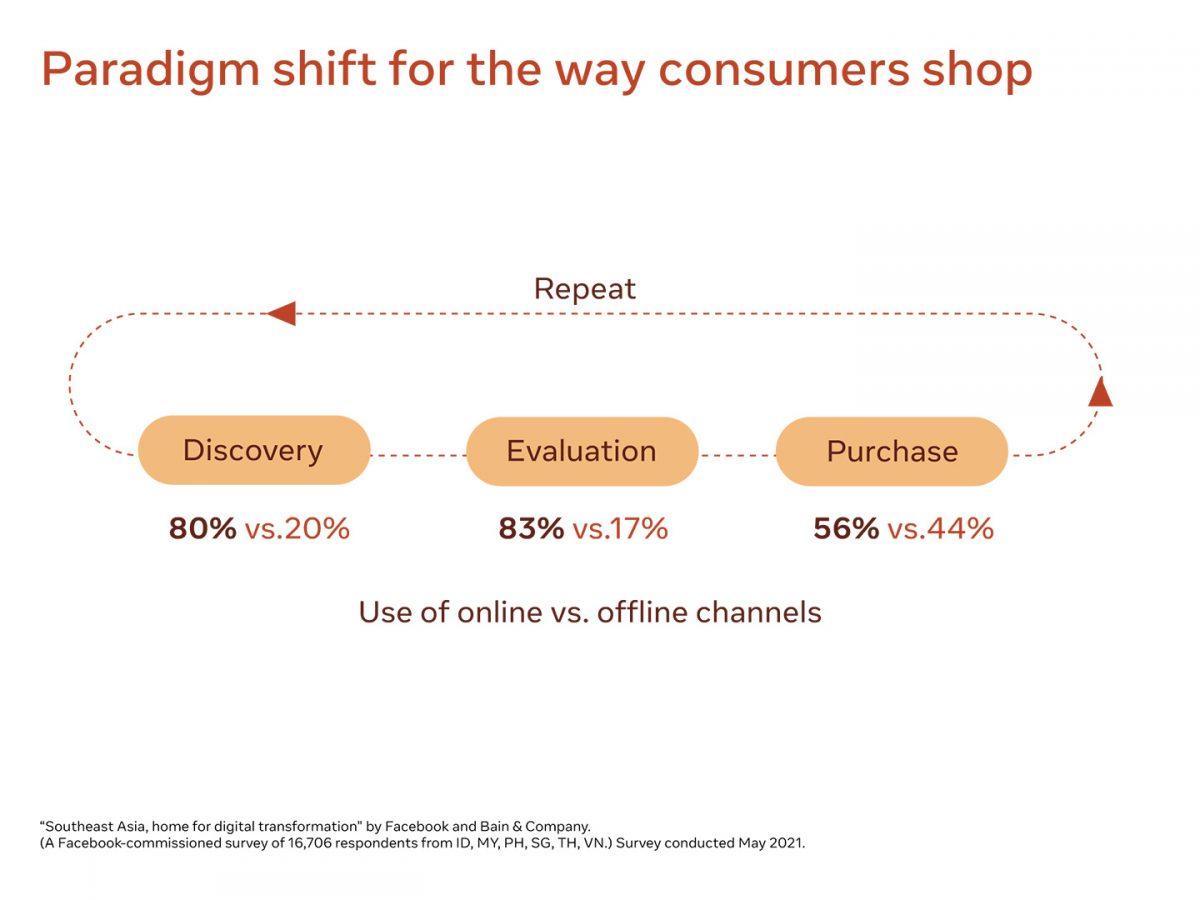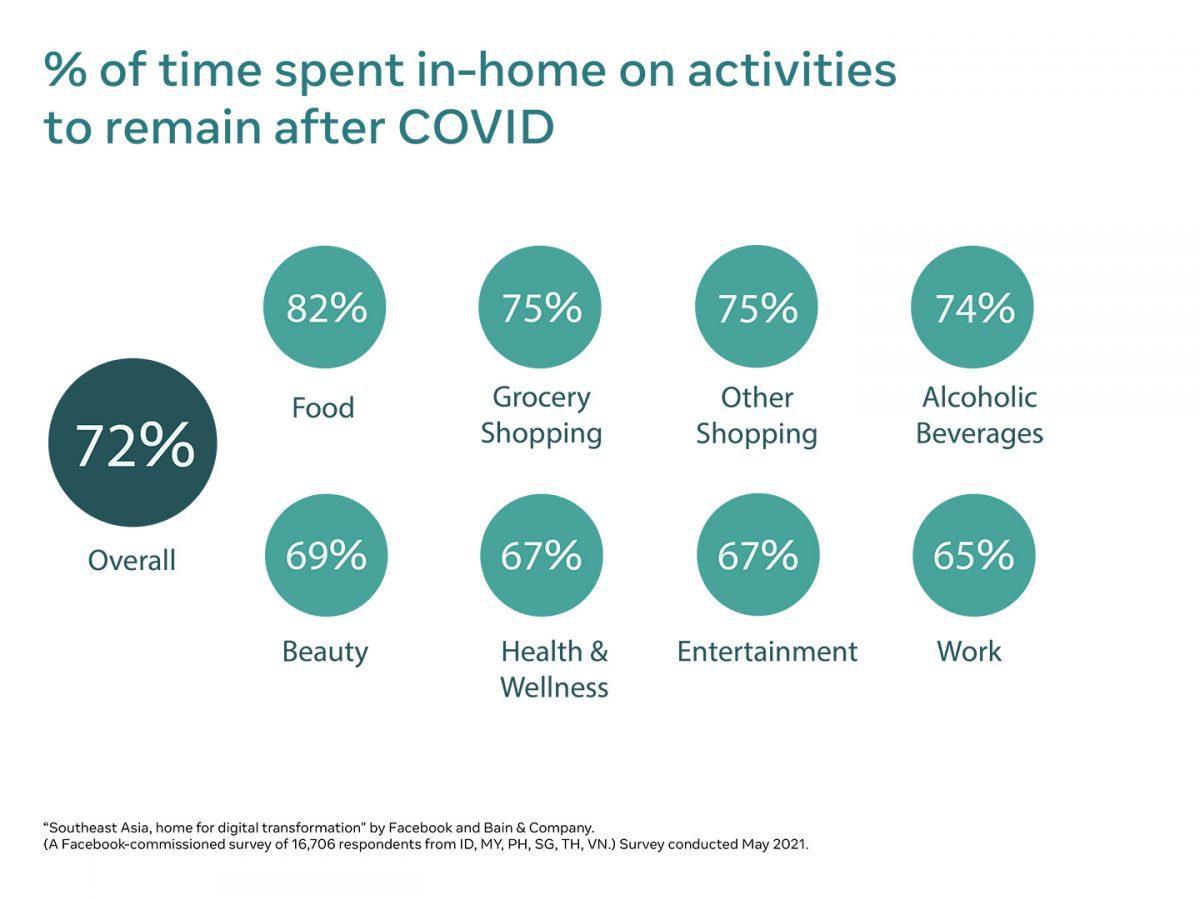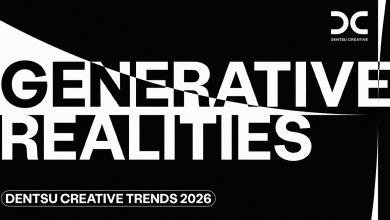MANILA, PHILIPPINES — Southeast Asia’s digital retail share grew 85 percent year-on-year, outpacing China (5 percent), Brazil (14 percent) and India (10 percent), according to Facebook and Bain & Company’s annual SYNC Southeast Asia report which looks at the digital economy and the future of e-commerce in the region.

The report is based on a survey of approximately 16,700 digital consumers and gathered insights from interviews with over 20 CXOs across six Southeast Asian countries, namely, Indonesia, Malaysia, the Philippines, Singapore, Thailand, and Vietnam. Digital consumers surveyed are those who have made an online purchase in at least two product categories in the past three months and are above 15 years of age.

According to Bain & Company, there will be 350 million digital consumers in Southeast Asia at the end of 2021 compared to around 310 million at the end of 2020. This means that almost 80 percent of Southeast Asian consumers will go digital by the end of the year, and almost 8 in 10 Filipino consumers will go digital by the end of 2021. Digital spending per person is up 60 percent compared to last year, with overall e-commerce sales set to double by 2026.

Southeast Asian consumers are not just spending more online as forecasted in 2020, more of them (45 percent) are using online as a primary purchase channel. They are open to discovery of new products and services with 65 percent of them saying they don’t know what they want to buy when they go online and 51 percent saying they had tried new online stores this year that they’d never heard of before. They’re also buying an even wider range of categories online – survey respondents said they now buy online for an average of 8.1 categories – 60 percent higher than the 5.1 average seen in 2020.
“It’s clear that the pandemic continues to push people online at an aggressive pace. People in Southeast Asia are forming new habits related to online discovery, consideration and purchase. For both new and established brands, these shifts signal the need to rethink traditional e-commerce experiences and find creative ways to inspire and connect with customers online,” said Benjamin Joe, VP, Southeast Asia at Facebook.
The study shows the immense potential to build brand loyalty and growth as the e-commerce market remains fragmented. In 2021, savvy consumers are shop-hopping across 7.9 websites before making a purchase decision — a notable increase from an average of 5.2 sites in 2020. In the Philippines, digital consumers shop an average of 7.8 websites in 2021, an increase from 4.3 in 2020. Consumers are becoming environmentally conscious with 92 percent of those surveyed saying they are willing to pay more for sustainable and socially responsible products, with over 80 percent of Filipino consumers willing to pay up to 10 percent premium for such products. In fact, environmental impact was cited as one of the top three reasons for Southeast Asian consumers to switch brands.

The home-centric lifestyle is getting even more entrenched in Southeast Asia. The report predicts that about 86 percent of in-home food delivery is expected to remain post-pandemic. Around 72 percent of respondents said time spent “in-home” would remain the same with 75 percent of the time spent shopping online at home also expected to continue post-pandemic. At least 37 percent of respondents said they expected to work from home even after the situation improved. Finally, almost 90 percent of executives believe that a hybrid WFH model will become the norm post the pandemic.
Digital discovery is crucial – 80 percent of channels people use to discover what they should buy are online channels and only 20 percent of such channels are offline. When it comes to evaluation, 83 percent of channels used to find more information about a product or service are online. Digital channels now get 56 percent of purchase spend with the remaining 44 percent going to offline channels. Of note, social media videos tripled in popularity as a discovery channel with 22 percent of respondents citing them as the top channel for discovery.
“These findings point to the fact that people increasingly want to feel that they’re making the right purchase decisions. Now is the time for brands to be brave and reimagine the channels and platforms on which they can stand out and be discovered. We’re hopeful that we can play a positive role in supporting brands in Singapore, and Southeast Asia at large, to experiment with new shopping modes or adopting emerging technology like augmented reality,” said John Rubio, Country Director, Philippines at Facebook.

On what’s to come, the report found that over 80 percent of venture capital funds are flowing into the internet and technology sectors – particularly Fintech, EdTech and HealthTech. The report suggests that disruption may be more apparent in healthcare and education as they rapidly evolve to adapt to consumer’s home-consumption habits such as home-based learning and telemedicine.
“Southeast Asia will undoubtedly leapfrog China to become the fastest growing digital economy in Asia Pacific. E-commerce gross merchandise value (GMV) grew almost +80% YoY and we are expecting it to double in the next five years,” said Gina Yu-Aquino, Associate Partner in Bain & Company’s Consumer Products Practice. “The moment has arrived for brands to take advantage of Southeast Asia’s (SEA’s) paradigm shift in consumer behaviours. The most successful brand owners will focus on strategies to both capitalise on a post-pandemic digital boom in the region and insulate themselves from ensuing digital disruptions.”
For more information, read the full report online here: http://www.facebook.com/business/news/digital-consumers-of-tomorrow-here-today
Country level stats and deeper insights at a category level will be available soon.














